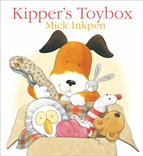Free subtraction worksheet from mathsblog.co.uk
Here is a maths worksheets concentrating on mental methods of subtracting a single digit from a teen. Much work needs to be done with subtracting from 10 before moving on to this.
There are really two types of question with these which demand different mental approaches.
The first type: eg 17 – 6 where it is easy to subtract the 6 from the 7 leaving 11. The tens are not affected.
The second type: eg 16 – 8 where the 8 is larger than the 6 is harder.
One method is add on from 8 to 10 (2 which has to be held ‘in your head’) and then count on from 10 to 16 which is easy (6) and add the two together to get 8. It is surprising how often we add on to do a subtraction sum!
A different approach is to know your doubles: knowing double 8 is 16 means the answer has to be 8.




 By the end of year 6 children should know and be able to read, write and use the following quite tricky words:
By the end of year 6 children should know and be able to read, write and use the following quite tricky words: